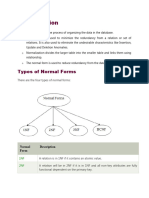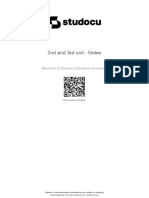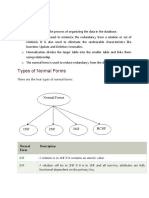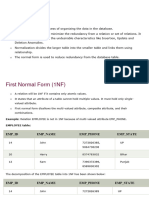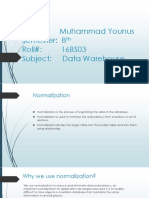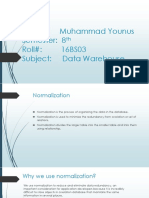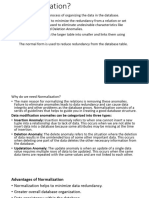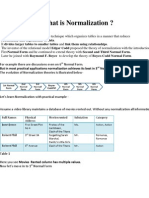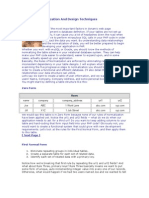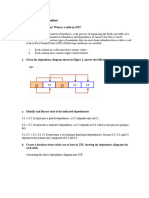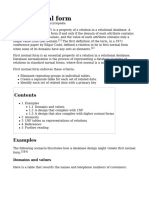0% found this document useful (0 votes)
38 views4 pagesNormalization
Normalization is a process that organizes data in a database into tables with columns and relationships defined between tables. It divides large tables into smaller tables and links them. There are four normal forms - 1NF, 2NF, 3NF. 1NF requires that each attribute contains a single value and no repeating groups. 2NF extends 1NF so that all attributes in a table depend on the primary key. 3NF extends 2NF so that tables are free of transitive dependencies where non-key fields depend on other non-key fields.
Uploaded by
Md Adnan Hussain AnsariCopyright
© © All Rights Reserved
We take content rights seriously. If you suspect this is your content, claim it here.
Available Formats
Download as PDF, TXT or read online on Scribd
0% found this document useful (0 votes)
38 views4 pagesNormalization
Normalization is a process that organizes data in a database into tables with columns and relationships defined between tables. It divides large tables into smaller tables and links them. There are four normal forms - 1NF, 2NF, 3NF. 1NF requires that each attribute contains a single value and no repeating groups. 2NF extends 1NF so that all attributes in a table depend on the primary key. 3NF extends 2NF so that tables are free of transitive dependencies where non-key fields depend on other non-key fields.
Uploaded by
Md Adnan Hussain AnsariCopyright
© © All Rights Reserved
We take content rights seriously. If you suspect this is your content, claim it here.
Available Formats
Download as PDF, TXT or read online on Scribd
/ 4





